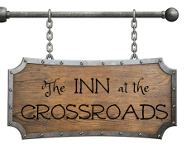
Thoughts:
In my ongoing quest to prove that medieval food is not gross, I knew I had to try these two recipes. I discovered the cookbook of Bartolomeo Scappi this summer at a medieval food lab (yep, I’m a dork), and was so diverted by the wonderful recipes in the book that I quickly added a few of them to my queue. You can check out the cookbook itself on Google Books, here.
Although Scappi provides much more detail about his methods of cooking, as well as proportions for ingredients, these recipes fought back a little. It took a few tries, and even now, I’ll probably take another crack at them to try and perfect the recipes. For those unfamiliar with these dishes, they are traditional Italian desserts. Zeppole are like little fried doughnut holes, and Zabaglione is like a thick alcoholic pudding. While I knew they were traditional, I didn’t know they dated so far back as 1570. I imagine they might even go back to Ancient Rome… I’ll take a look.

Medieval Zeppole, from Scappi
As mentioned, the Zeppole need a little work. I followed the recipe very closely, and met with some difficulties. I boiled the chickpeas and chestnuts, which seems now unnecessary, unless you are using dried chestnuts. The yeast was not sufficient to leaven the dough, so I added the six egg whites suggested at the end of the original recipe, which helped fluff the fritters up. I ground up the nuts myself, which made for a lumpy sort of dough that was prone to falling apart without the eggs. These were the many trials I struggled with in the process of working through this recipe. In the future, I would use a variety of nut flours, rather than the coarsely ground nuts I had, which should result in a more cooperative dough.

Medieval Zabaglione, from Scappi
The Zabaglione, on the other hand, is wonderful. Rich and boozy, it’s also somehow also light and fluffy, somewhere between a custard and a mousse. The modern version tends to be plainer, but I love the traditional addition of the cinnamon, which gives it a nice spiciness. This recipe took me two tries to get right, but once I did, it’s an instant house favorite. I omitted the water the second time, and the mixture fluffed up beautifully, just the way it ought to.
One very cool thing about these two recipes is that they are so complimentary. One uses six egg yolks, the other the whites. The flavors and textures go well together, and the result is a tasty dessert pairing worthy of any dinner party.

Zeppole Recipe
Makes around 2 dozen small fritters. Time: around 1 hour
Cook’s Note: I’m putting in the recipe as I made it, but plan to revisit and improve in the coming month or so. You’ll have an easier time if you just use nut flours rather than trying to grind the nuts yourself. Be sure to check back for the update!
Zeppole Ingredients:
- 1 15 oz. can chickpeas/garbanzo beans
- 6 oz. chestnuts, shelled
- 6 oz. walnuts, shelled
- 4 oz. sugar
- 1 Tbs. cinnamon
- 1/2 tsp. combined cloves and nutmeg
- dash of rosewater
- optional seasonings: mint, marjoram, burnet, wild thyme
- 6 egg whites
- oil or fat for frying (I used Crisco)
- cinnamon sugar, for dusting
Wash the chickpeas, removing any of the outer skins that peel off. Boil the chickpeas and chestnuts in a light meat broth for 20-30 minutes, until the chestnuts are soft. Strain, then grind together the chickpeas, chestnuts, and walnuts until you have a relatively fine meal or paste. Add the sugar, cinnamon, cloves, and nutmeg, followed by the yeast mixture. If you like, add in some minced herbs to taste. Stir in the egg whites.
Bring your oil to medium heat. Using a spoon, scoop out about two tablespoons of the batter at a time. gently drop this mixture into the hot oil. They should sink to the bottom of the pan, but then rise to the top as they cook (you may need to loosen them up if they stick to the bottom). Fry for about a minute, until the fritters are a dark golden brown. It may take some time to get the hang of this part, but keep trying!
When the fritters are done, remove to a plate covered with paper towels to drain. Brush each fritter with rosewater and roll in cinnamon sugar.
Zabaglione Recipe
Makes about 6 small servings Time: ~20 minutes
Zabaglione Ingredients:
- 6 egg yolks
- 6 oz. sweet malmsey
- 3 oz. sugar
- 1 1/2 tsp. cinnamon
- 4 oz. water
- butter
Combine six egg yolks with the sugar and cinnamon in a medium bowl. Whisk briskly until the sugar has dissolved and the mixture looks like a very pale yellow cream. Add the white wine, whisk to combine, then place the mixture in a bowl over a double boiler, and whisk while it cooks until it is the consistency of a thick pudding. Carefully remove from heat (the bowl is hot!) and stir in the butter. Serve warm, as in the original instructions, or pour into serving dishes and chill for a thicker set.






